Response of dissolved organic carbon molecular footprints in mangrove tidal flats to extreme rainstorm events
Abstract
Mangroves, as typical blue carbon ecosystems, store massive amounts of soil organic carbon and serve as both sources and sinks of organic carbon. Under extreme rainstorm conditions, once mangrove ecosystems are damaged, they lead to significant release of greenhouse gases into the atmosphere, causing severe greenhouse effects and resulting in changes to carbon footprints. However, the effects of extreme rainstorms on the spatial distribution, optical properties, and molecular characteristics of soil organic carbon in mangrove sediments remain unclear. This study focused on a typical mangrove tidal flat in Shenzhen Bay, Southeast China, to quantify variations in sediment carbon fractions (total carbon (TC), dissolved organic carbon (DOC), and dissolved inorganic carbon (DIC)), fluorescent composition, and biomolecular compounds of DOC, and identified their response mechanisms to extreme rainstorms. The results showed that the spatial distribution of sediment TC, DOC, and total nitrogen (TN) followed the order of tidal creek > mudflat > mangrove both before and after a rainstorm. The variation degree of DOC content (5.0%-48.5%) after extreme rainstorms followed the pattern of mangrove > mudflat > creek, while the result for DIC was completely opposite. In the vertical direction, tidal flat sediments exhibited decreasing TC, DOC, and TN concentrations with depth before the extreme rainstorm. After the rainstorm, DOC and TN increased across all sediment layers, whereas IC decreased at all depths. After the extreme rainstorm, TN and DOC in sediments increased significantly. Combined with analysis of the optical and molecular properties of DOC, the results indicated that lignin- and tannin-like compounds with high stability increased in mudflat sediments after the extreme rainstorm, while tryptophan-like compounds with high aromaticity and low humification increased in mangrove sediments, and protein-like organic compounds in tidal creek sediments decreased. Principal component analysis showed that extreme rainstorms mainly affected sediment DOC by influencing the transport of silt and clay. This study not only contributes to a better understanding of how extreme rainstorms regulate organic carbon behavior in mangrove sediments to improve sustainable management of mangrove wetlands under the pressure of extreme weather events but also provides new directions for carbon footprint research.
Keywords
INTRODUCTION
Coastal blue carbon ecosystems play an irreplaceable role in global carbon cycling and climate regulation, with mangroves among the most important, attracting significant attention for their excellent carbon storage capacity and ecosystem service functions[1]. However, under the background of global climate change, frequent extreme weather events pose serious threats to these vulnerable ecosystems[2]. Dissolved organic carbon (DOC), as the most active carbon component in coastal ecosystems, exhibits response mechanisms to extreme weather events that are directly linked to the carbon storage stability and ecological function maintenance of blue carbon ecosystems[3]. In-depth understanding of how extreme rainstorm events affect the spatiotemporal distribution, optical properties, and molecular composition of DOC in mangrove tidal flats has important scientific significance and practical value for accurately assessing the carbon sink function of blue carbon ecosystems, predicting their response to climate change, and formulating effective protection and management strategies.
Carbon storage function and vulnerability
Coastal and marine habitats such as mangroves, salt marshes, and seagrass meadows form part of the so-called blue carbon ecosystems, which are notable for their capacity to capture and store substantial amounts of carbon[4]. The carbon storage capacity of mangrove ecosystems is particularly outstanding, with carbon storage per unit area being 3-5 times that of tropical rainforests[5], mainly stored in sediments as soil carbon, accounting for 60%-85% of the total carbon (TC) storage of the entire ecosystem[6]. The high carbon storage capacity in mangrove sediments is mainly attributed to their unique environmental conditions and ecological processes, which continuously input organic carbon into sediments through root exudates, litter input, and capture of fine particulate matter, forming an efficient carbon accumulation mechanism[4].
However, blue carbon ecosystems are also among the most vulnerable ecosystems on Earth. Positioned at the land-sea boundary, they are directly exposed to terrestrial pollution and anthropogenic disturbances, while also being vulnerable to marine stressors such as sea-level rise and storm surges[7]. More importantly, when these ecosystems are damaged, the large amounts of stored organic carbon are rapidly released into the atmosphere, producing significant greenhouse effects and thereby exacerbating global climate change[8]. Therefore, understanding and protecting the carbon storage function of blue carbon ecosystems is of great significance for achieving global climate goals.
Key role of DOC
DOC, as the most active and important carbon component in coastal ecosystems, plays a key role in carbon cycling. It is a complex mixture of organic compounds, including various molecular weights and structures from simple organic acids to complex humic substances, containing multiple functional groups such as hydroxyl, carboxyl, ketone, and carbonyl groups[9]. These diverse molecular structures enable DOC to have multiple functions in carbon cycling.
In mangrove tidal flat systems, DOC sources exhibit obvious diversity and complexity. Inputs of DOC arise from multiple sources, including leaching of soil organic matter, decomposition of plant residues and mangrove litter, organic discharges from human activities, and microbial metabolism within sediments[10,11]. DOC plays a multifaceted role in coastal ecosystems. First, it serves as an important energy and nutrient source, providing carbon sources and energy for microbial communities and supporting complex food web structures[12]. Second, it participates in important biogeochemical processes, including nutrient cycling, heavy metal complexation, and migration and transformation of organic pollutants[13]. Third, its optical properties can affect the optical environment of water bodies, thereby influencing primary productivity and energy flow in ecosystems[14].
Changes in DOC concentration, composition, and properties can sensitively reflect environmental conditions and functional changes in coastal ecosystems. A recent review by Alongi[15] emphasized that mangrove can show a net import of DOC and act as a DOC sink. Adsorption is a dominant fate of DOC, but adsorption reactions are reversible and aged DOC may be released and exported from soils to groundwater, fluvial networks and ocean environment. However, traditional DOC methods mainly rely on concentration determination and simple optical property analysis, lacking precise characterization at the molecular level. With the development of analytical techniques, particularly Fourier Transform Ion Cyclotron Resonance Mass Spectrometry (FT-ICR MS)[16,17], precise analysis of DOC molecular composition has become possible. However, the application of these advanced techniques in coastal DOC research remains limited, especially in extreme event impact studies. Therefore, we employed optical spectroscopy, FT-ICR-MS, and statistical analyses to reveal the mechanism of the DOC variation. By analyzing optical properties of DOC, such as ultraviolet (UV) absorption[18] and fluorescence characteristics[19], its source, maturity, and bioavailability can be inferred. Molecular-level analysis can provide more precise compositional information, reveal the relative contributions and change trends of different biochemical components[16].
Impact mechanisms of extreme climate events
Against the backdrop of global climate change, rising frequency and intensity of extreme weather events pose growing, unprecedented threats to coastal ecosystems[20,21]. Extreme rainstorms, as one of the most common and widely impactful extreme weather events, affect the structure and function of coastal ecosystems through various direct and indirect pathways. Previous studies have demonstrated that storms, hurricanes, and other climatic disturbances significantly alter soil carbon storage[22], and more critically, they disrupt the integrity of estuarine ecosystems such as mangroves and salt marshes. For instance,
Since the 21st century, there has been a notable increase in the frequency of rainstorms in southern China. Mangroves are predominantly found in tropical and subtropical coastal regions, where rainstorms frequently occur. In China, Guangdong Province - characterized by a 3,368-km-long coastline - hosts the country's largest expanse of mangroves, covering approximately 12,000 hectares[26]. However, extreme rainstorms might potentially change the carbon source-sink relationship in mangrove tidal flats, which needs further investigation.
Research objectives and innovations
Based on these research questions, this study proposes the following two core hypotheses: (1) Extreme rainstorm events significantly affect the characteristics of tidal flat sediments and the migration and transformation mechanisms of DOC by changing hydrodynamic conditions and sediment transport processes. This hypothesis is based on the understanding that extreme rainstorms can significantly change coastal environmental conditions, expecting that rainstorms will affect DOC distribution and composition through chemical leaching and biological process changes; (2) DOC and its optical and molecular characteristics exhibit differential response patterns to rainstorm events in different sub-regions of mangrove tidal flats (i.e., mangrove, tidal creek, and bare mudflat). This hypothesis rests on the premise that distinct habitats exhibit unique environmental conditions and fulfill different ecological roles. To answer the above research questions, this study sets the following specific objectives: (1) To elucidate the response mechanisms of DOC optical properties and molecular composition to extreme rainstorms. Using advanced spectral and mass spectrometry techniques, this study analyzes the three-dimensional fluorescence and molecular composition characteristics of DOC to reveal how extreme rainstorms influence its sources, maturity, aromaticity, and biochemical components; (2) To identify the dominant environmental factors and mechanisms controlling DOC variations. Through multivariate statistical and correlation analyses, this study determines the key environmental factors affecting DOC and elucidates their interactions and underlying mechanisms.
MATERIALS AND METHODS
Study area and sampling strategy
This study selected the mangrove tidal flats of Shenzhen Bay (SZB) as the research area. SZB [Figure 1A] is located on the eastern side of the Pearl River Estuary and is a semi-enclosed shallow tidal bay with subtropical monsoon climate characteristics. It spans approximately 80 km2, with an average water depth of three meters, an annual mean temperature of 22.0 °C, and average annual rainfall of about 1,935.8 mm. The tidal regime is mixed semi-diurnal, with an average tidal range of 1.9 meters[27]. The hydrodynamic exchange in SZB is relatively limited, with water residence time of 15-25 days[28]. This special hydrological condition leads to easy accumulation of pollutants in sediments and relatively poor surface water quality[29]. The mangrove tidal flats in this area have typical ecological continuum characteristics, with tidal creeks, mangrove areas, and mudflats distributed sequentially from land to sea, providing an ideal natural experimental site for studying DOC responses to extreme rainstorms in different habitats.
Figure 1. Map of the study area showing the relative position of the sampling site in (A) mainland China and Shenzhen Bay (SZB); (B) daily rainfall recorded during the rainstorm event; and (C) field sampling layout illustrating the spatial arrangement of five sampling locations by red bars (W1-W5: W1-W2 in mudflat, W3-W4 in mangrove, and W5 in tidal creek) along the mangrove intertidal zone.
Rainstorms are categorized by precipitation rates exceeding 16 mm per hour, 30 mm over a consecutive
Based on research objectives and regional characteristics, this study adopted a spatiotemporal comparative sampling design. Along representative intertidal transects, five sampling sites (W1-W5: W1-W2 in mudflat, W3-W4 in mangrove, and W5 in tidal creek) were systematically positioned across the tidal creek-mangrove-mudflat continuum to encompass distinct habitat types [Figure 1C]. We collected sediment samples from a depth of 0-30 cm and stratified into three layers, including surface (0-10 cm), middle
Basic physicochemical parameter
Sediment characterization involved integrated analytical workflows encompassing physical, chemical, and morphological assessments. Initial sample conditioning utilized freeze-drying protocols (48-h duration) to eliminate moisture interference. Particle size distributions were quantified using laser diffraction analysis (MasterSizer-2000, 0.02-2,000 μm range) following sodium hexametaphosphate dispersion treatment. Mechanical processing employed progressive size reduction: manual grinding, 2-mm screening, and ball mill homogenization to achieve uniform particle distributions. Aqueous extraction procedures combined processed sediments (3 g) with ultrapure water (60 mL) under extended mixing (24 h), followed by centrifugal separation and membrane filtration (0.45 μm PES) to obtain clarified extracts (n = 30:5 locations × 3 depths × 2 time points = 30 independent sediment samples). Extract characterization included pH and conductivity measurements using specialized electrode systems (IntelliCALL™ PHC101 and CDC401) coupled with HACH HQ440d analytical platforms. Moisture content determination employed standard gravimetric analysis, comparing initial and thermally treated (105 ± 2 °C, 12 h) sample masses.
DOC concentration determination
A total organic carbon analyzer (TOC-L CSH/CSN) was used to determine concentrations of TC, DOC, and total nitrogen (TN). This instrument mainly quantifies carbon content through high-temperature catalytic oxidation in a high-temperature furnace, with linear regression coefficient R2 > 0.999. Dissolved inorganic carbon (DIC) concentration was calculated as the difference between TC and DOC. Before DOC analysis, 30 μL of 6M hydrochloric acid was added to samples, acidifying approximately 15 mL of sample to pH 2.0 to remove interference from DIC. Potassium hydrogen phthalate was used as a standard sample to ensure accuracy and reproducibility of analytical results.
DOC optical property analysis
Spectroscopic characterization of DOC employed dual analytical approaches: UV-visible absorption spectroscopy (Hitachi, 200-800 nm) for aromaticity (SUVA254: specific ultraviolet absorbance at 254 nm) and molecular weight (SR: spectral slope ratios, 275-295/350-400 nm) determination, and three-dimensional fluorescence spectroscopy (Horiba) for molecular composition analysis[19]. Fluorescence measurements utilized diluted samples, which were diluted using Milli-Q water to A254 (absorbance at 254 nm) less than 0.1 Abs·cm-1, across 245-826 nm excitation and 240-550 nm emission ranges (1-2 nm resolution, 3-s integration) with appropriate blank corrections and scattering removal. Fluorescence data processing employed parallel factor analysis (PARAFAC) decomposition[30] via DOMFluor algorithms, analyzing 30 samples through S4C6T3 (splits: 4, combinations: 6, tests: 3) validation protocols to identify optimal component numbers[19]. Component characterization utilized OpenFluor database comparisons (≥ 0.98 similarity) for reliable identification[19]. Biogeochemical interpretation incorporated fluorescence (FI) and humification (HIX) indices to assess DOC sources and transformation processes, providing insights into DOC provenance and environmental fate. The relevant parameters are presented in Table 1.
Spectral parameters of DOC and their meanings
| Spectral parameter | Definition | Meaning | Reference |
| SUVA254 (L·mg C-1·m-1) | Ratio of absorbance to DOC concentration at wavelength 254 nm per unit optical path length | Indicating the relative content of aromatic compounds of DOC. The greater the value, the higher the contribution of aromatic substances | [18] |
| SR (Dimensionless) | Ratio of spectral slope at wavelength 275-295 nm to wavelength 350-400 nm | Indicating the average molecular weight of DOC | [31] |
| FI (Dimensionless) | When Ex at 370 nm, fluorescence ratios of Em at 470 nm and 520 nm | Indicating the component weight of terrestrial and microbial sources of organic matter. FI~1.8 indicates DOC source from metabolic products from bacteria or algae; FI~1.2 indicates DOC source from terrestrial plants or sediment | [32] |
| HIX (Dimensionless) | When Ex at 254 nm, the ratio of the integral area of and Em at 435-480 nm to the integral area of sum at 300-445 nm and 435-480 nm | Indicating the relative content or degree of humification of DOC. The higher the value, the higher the degree of humification | [33] |
| β/α (Dimensionless) | The ratio of α peak at 254 nm to β peak at 280 nm | The β/α is used to assess the relative contribution of autochthonous versus allochthonous of DOC. β/α < 1 : autochthonous DOC (microbially-derived); β/α > 1 : allochthonous (terrestrially derived) | [34] |
DOC molecular characteristics analysis
The molecular composition of DOC in representative samples from each habitat, including specifically W1 (mudflat), W4 (mangrove), and W5 (tidal creek), was characterized using FT-ICR MS, following the protocols outlined by Herzsprung et al. and Merder et al.[16,17]. Solid phase extraction (SPE) pretreatment was strictly performed according to methods by Dittmar et al.[35] and Wang et al.[36]. SPE samples were completely dissolved in specific volumes of chromatographic-grade methanol to achieve carbon concentrations of approximately 45 μgC/mL to reduce the impact of carbon concentration changes on ionization degree. The dissolved samples were then introduced into a 9.4T Apex-Ultra FT-ICR MS (Bruker Daltonics) equipped with a negative ESI ion source via an injection pump. Dissolved samples were introduced into the mass spectrometer through a syringe pump. Bruker Daltonics data analysis software was used for automatic molecular formula assignment of ultra-high resolution mass spectra. The Molecular Lability Boundary (MLBL) was calculated according to D'Andrilli et al.[37]. Seven biochemical components were identified following the methods of Zhang et al.[38], including lipid-, protein-, aminosugar-, carbohydrate-, dissolved black carbon-, lignin-, and tannin-like substances. The relative intensity of different biochemical components was calculated as the ratio of matched molecular numbers to total matched molecular numbers.
Statistics analysis
This study investigated both temporal (pre- and post-extreme rainstorm) and spatial variations in carbon and nitrogen concentrations, along with the optical properties and fluorescent components of DOC, across three habitat types: mangrove forests, unvegetated mudflats, and tidal creek environments. Mantel tests were performed to analyze relationships between DOC-related variables and geochemical factors and sediment grain size factors. Pearson correlation coefficients were calculated to assess linear relationships between parameters. One-way analysis of variance (ANOVA) followed by Duncan's multiple comparison test was used to determine significant differences between treatments at P < 0.05. The fluorescent components of DOC were characterized via PARAFAC. Data visualization was performed using Origin (version 2018b), Surfer (2016), and MATLAB (2020a), including spatial distribution maps, correlation heatmaps, and principal component analysis (PCA) plots.
RESULTS
Distribution of C and N
The DOC concentration before and after the extreme rainstorm ranged from 0.88 to 22.78 mg L-1 and 1.04 to 14.64 mg L-1, respectively. Before the extreme rainstorm, the mean TC, DOC, and TN concentrations followed the order of tidal creek > mudflat > mangrove, while the DIC concentration in mudflat sediment was the highest, followed by tidal creek and mangrove [Figure 2]. After the extreme rainstorm, the mean DOC concentrations increased, which was mainly attributed to increases in the mudflats and mangroves, whereas a decline was observed in the tidal creek [Figure 2A]. In contrast, the mean DIC concentration decreased, with the most significant decrease associated with the mudflat and mangrove, whereas it increased in the tidal creek [Figure 2B]. Nevertheless, the loss of DIC was much greater than the increase in DOC at all sampling sites; thus, the mean TC concentration decreased after the extreme rainstorms [Figure 2C]. Conversely, the mean TN concentrations across all three habitats increased after the extreme rainstorms [Figure 2D]. In the vertical direction, before the extreme rainstorm, the mean concentrations of TC, DOC, and TN in tidal flat sediments decreased with increasing depth. After the rainstorm, DOC and TN increased across all sediment layers, whereas IC decreased at all depths. The increase in DOC was most pronounced in the surface layer, followed by the middle and bottom layers, while TN exhibited the largest increase in the middle layer. In contrast, the average IC concentration decreased most markedly in the surface layer, followed by the bottom and middle layers.
DOC optical properties
DOC spectrum parameters
The spectral parameters of DOC in the sediments before and after the extreme rainstorm are shown in Figure 3. Before the extreme rainstorm, sediment DOC in the mudflat exhibited the lowest SR (0.82 ± 0.11) and FI values (1.63 ± 0.05) with the highest HIX values (0.84 ± 0.05) compared with mangrove and tidal creek [Table 2]. Conversely, sediment DOC in mangroves showed the highest SR, β/α, and FI values with the lowest HIX values, indicating a predominance of microbial DOC with low molecular weight and high maturity. Additionally, sediment DOC in the tidal creek displayed the highest SUVA254 values and the lowest β/α values.
Figure 3. Spatial distribution of DOC spectrum indices before and after rainstorms, including (A) SUVA254, (B) SR, (C) FI, (D) HIX, and (E) β/α.
Spectral indices of DOC in sediments from different habitats of the SZB before and after the extreme rainstorm. n denotes the number of samples, and values are expressed as mean ± SD
| Habitats | SUVA254 (L/mg C/m) | SR | FI | HIX | β/α | |
| Before rainstorm | Mudflat (n = 6) | 1.55 ± 0.42 | 0.82 ± 0.11 | 1.63 ± 0.05 | 0.84 ± 0.05 | 0.73 ± 0.04 |
| Mangrove (n = 6) | 0.95 ± 0.14 | 1.43 ± 0.59 | 1.92 ± 0.15 | 0.73 ± 0.08 | 0.78 ± 0.09 | |
| Tidal creek (n = 3) | 1.6 ± 0.42 | 0.95 ± 0.1 | 1.78 ± 0.01 | 0.74 ± 0.04 | 0.67 ± 0.01 | |
| After rainstorm | Mudflat (n = 6) | 1.73 ± 0.33 | 0.83 ± 0.08 | 1.59 ± 0.08 | 0.86 ± 0.04 | 0.7 ± 0.04 |
| Mangrove (n = 6) | 1.1 ± 0.46 | 1.98 ± 0.82 | 1.96 ± 0.22 | 0.67 ± 0.1 | 0.82 ± 0.12 | |
| Tidal creek (n = 3) | 1.73 ± 0.09 | 1.06 ± 0.13 | 1.89 ± 0.01 | 0.66 ± 0.1 | 0.76 ± 0.12 | |
After the extreme rainstorm, in the horizontal direction, the mean values of FI and β/α decreased in the mudflat sediment [Figure 3C, E], whereas SUVA254, SR and HIX increased [Figure 3A, B, D]. Optical indices demonstrated heterogeneous responses to extreme rainstorm events, with humification-related parameters showing distinct patterns compared to other spectroscopic indicators. HIX values consistently declined across mangrove and tidal creek environments, while spectroscopic parameters including aromaticity and molecular weight indicators generally increased. Vertical stratification revealed additional complexity: the sediment of surface and middle layers maintained the HIX reduction pattern observed spatially, whereas deeper sediments exhibited selective decreases in SR and FI parameters, contrasting with the general increasing trend for other optical indices. Based on the variation in DOC concentrations, spatial distribution of spectral indices, and their respective meanings, the increase in tidal flat DOC concentrations can be attributed to three distinct processes: (1) Enhanced terrestrial DOC accumulation in mudflats, characterized by low molecular weight (high SR), high aromatic content (high SUVA254), high degree of humification (high HIX), and terrestrial origin (low FI, high β/α). This represents aged terrestrial organic matter that has undergone extensive processing; (2) Increased microbial-derived DOC in mangrove surface and middle layer sediments, featuring low molecular weight (high SR), moderate aromatic content (moderate SUVA254), low degree of humification (low HIX), and microbial origin (high FI, low β/α). This indicates fresh microbial metabolic products; (3) Reduced terrestrial DOC export from tidal creeks, where the remaining DOC was characterized by low molecular weight (high SR), low aromatic content (low SUVA254), minimal humification (low HIX), and mixed origin (intermediate FI and β/α values). This suggests preferential removal of more recalcitrant terrestrial components.
Contribution of different fluorescent components
The application of PARAFAC to the three-dimensional fluorescence spectra of sediment samples led to the identification of four distinct fluorescence components [Table 3 and Figure 4]. Component C1 was attributed to the decomposition products of soil organic matter such as humus. C2 represented reprocessed terrigenous organic matter. C3 was identified as macromolecular terrestrial humus. C4 corresponded to a tryptophan-like protein.
Figure 4. Four fluorescent components in the tidal flat sediments of SZB: (A) C1, (B) C2, (C) C3, and (D) C4.
Four fluorescence components of sediments in SZB identified by PARAFAC
The contribution of DOC fluorescence components varied across the different habitats within the SZB tidal flat sediments [Figure 5]. Before the extreme rainstorm, the mudflat and mangrove were both mainly contributed by C1 (mudflat: 35.61%; mangrove: 36.77%), while tidal creek primarily contributed by C4 (31.87%). This indicated that sediment DOC in mudflats and mangroves was predominantly the decomposition product of soil organic matter, with a greater contribution from tryptophan-like proteins in tidal creek sediment. As shown in Figure 5, after the extreme rainstorm, fluorescence components shifted differently across habitats. In mudflats, C1 and C4 decreased while C2 and C3 increased. In mangroves and tidal creeks, C1, C2, and C3 decreased with C4 declining. Notably, the dominant component in mangrove sediments shifted from C1 to C4, indicating a change from soil organic matter decomposition to tryptophan-like DOC sources.
Molecular composition of DOC
FT-ICR MS analysis revealed profound impacts of extreme rainstorms on DOC molecular composition [Figure 6]. The relative abundances of seven major biochemical components changed significantly, showing obvious spatial heterogeneity [Figure 7]. The lignin- and tannin-like compounds increased after the event, showing positive correlations with Fe, clay, and moisture content [Figure 7]. Conversely, protein-like compounds - positively related to pH and Mn - decreased [Figure 7]. Before the rainstorm, Before the rainstorm, lignin-like substances showed the highest relative intensity across all habitats (tidal creek > mudflat > mangrove), followed by tannin- and lipid-like components. Afterward, lignin-like intensity rose from 32.28% to 40.14% in mudflat sediments but declined in mangroves and tidal creeks. Carbohydrate-like compounds also increased markedly, nearly fourfold in tidal creek sediments.
Figure 6. Correlation analysis demonstrating significant relationships (Spearman, P < 0.05) between molecular intensities and sediment properties (Fe, Mn, clay, moisture, pH) before (A, C, E, G, I) and after (B, D, F, H, J) extreme rainstorm events. Color gradients represent correlation strength and direction (red: positive; blue: negative). Rectangular overlays categorize biomolecular compounds: lipid-, protein-, amino sugar-, carbohydrate-, condensed aromatic-, lignin-, and tannin-like classes.
Mantel analysis
According to the results of the Mantel test [Figure 8A], both DOC and its characteristic parameters (including the fluorescent composition and molecular composition) were notably influenced by geochemical Factor 1 (F1: pH, EC, and moisture) and sediment particle size Factor 2 (F2: gravel, sand, silt, and clay) before extreme rainfall. This suggests that the DOC content and characteristic parameters in the sediment before the extreme rainstorm were substantially impacted by biochemical reactions (F1) and physical actions (F2). Furthermore, DOC and its characteristic parameters exhibited a strong positive correlation with physical actions (F2) before the extreme rainstorm, whereas the association with biochemical reactions (F1) was intricate. DOC, SUVA254, HIX, C3, and C4 were not significantly correlated with F1, whereas other characteristic parameters showed a significant correlation. After the extreme rainstorm, the relationship between Factor 1 and TC or C4 became non-significant, and the TC content increased [Figure 2]. This indicates that the extreme rainstorm washed away a large amount of the DIC. Furthermore, the correlations of other indicators with Factors 1 and 2 remained largely unchanged after the extreme rainstorm [Figure 8B].
Figure 8. Mantel correlation maps showing relationships between DOC variables and environmental factors before (A) and after (B) rainstorms. Environmental parameters were grouped into geochemical (F1: pH, EC, moisture) and particle size (F2: gravel, sand, silt, clay) categories. Edge width indicates Mantel's Pearson values, edge colors show significance levels, and node properties represent partial Pearson statistics with permutation-based significance. Pairwise environmental correlations are displayed using Pearson coefficient color gradients (Asterisks denote the level of statistical significance: *P ≤ 0.05, **P ≤ 0.01, ***P ≤ 0.001). Principal component analysis (C-F) demonstrates environmental controls on DOC and spectral properties across storm conditions. Blue arrows show environmental variable loadings (15 degrees of freedom), while colored circles represent sample scores for mudflat (blue), mangrove (green), and tidal creek (red) habitats.
According to the Pearson results, before the extreme rainstorm, SUVA254 was positively correlated with TC and DIC [Figure 8A]. However, after the event, this correlation was not significant, whereas SUVA254 showed a positive correlation with the DOC [Figure 8B]. The relationship between SR and DOC and SUVA254 changed from no correlation before the rainstorm to a significantly negative correlation after it. The correlations among other indicators did not undergo substantial changes after the extreme rainstorms.
Principal component analysis
PCA revealed the main environmental factors (before and after the extreme rainstorm) controlling DOC changes [Figure 8C-F]. Before the rainstorm, PC1 (accounting for 54.92% of the total variance) exhibited the largest positive loading on C2, EC, TC, C3, and HIX [Figure 8C] and the largest negative loading on FI and SR. PC2 accounted for 21.31% of the variance, with a significant positive loading on DOC and C4 and a significant negative loading on C1. DOC responses to different environmental factors varied significantly among habitats before the rainstorm [Figure 8D]: tidal creek samples (red) were located in the negative PC1 and positive PC2 quadrant; mangrove samples (green) were distributed from the negative to the central PC1 range; and mudflat samples (blue) were clustered in the positive PC1 and negative PC2 quadrant. PC1 and PC2 explained 60.68% and 25.09% of the total variance after the extreme rainstorm, respectively [Figure 8E]. The largest positive loadings of PC1 and PC2 were similar to those before the rainstorm. After the extreme rainstorm [Figure 8F], tidal creek samples shifted toward more negative PC1, enhancing habitat separation; mangrove samples moved toward higher PC2; mudflat samples remained relatively stable with increased variance and slight shift toward positive PC1.
DISCUSSION
Migration and transformation for Sediment C and N after rainstorms
Before and after the extreme rainstorm, sediment TC, DOC, and TN concentrations exhibited a gradient of tidal creek > mudflat > mangrove [Figure 2], and DOC in the tidal creek had high aromatic characteristics [Figure 3]. Mudflat sediments contain a higher proportion of high-molecular weight and highly humified land-derived DOC, while sediment DOC in the tidal creek was characterized by higher aromatic content and lower maturity [Table 2]. Matos et al.[43] previously reported that tidal creeks have a higher potential for TOC and TN deposition than mangroves and mudflats. This was attributed to the tidal creek being a low-lying area, resulting in the sediment being submerged for a longer time than other intertidal areas. Additionally, the tidal creek was the area closest to the inland; thus, it was also the area most affected by sewage discharged from drainage pipes. These conditions promoted sedimentation, thus contributing to the highest concentrations of DOC and TN[44]. The presence of mangrove vegetation reduced nutrient concentrations and mitigated fine sediment loss, accounting for the lower DOC and TN contents observed in mangrove sediments than in tidal creeks and mudflats[45].
After the extreme rainstorm, in the horizontal direction, DOC increased in mudflats and mangroves, but decreased in tidal creeks. In contrast, the DIC trend was inversely correlated with that of DOC. PC1 primarily represented the influence of sediment particle size distribution on terrigenous humus, indicating that terrigenous humus in sediment DOC has the same fate as silt and clay, while PC2 represented secondary influencing factors on tidal flat sediments, including vegetation type, microbial degradation of DOC, and geochemical changes [Figure 8]. Extreme rainstorms are associated with elevated water velocities and levels, which can induce soil erosion and sediment transport. In mudflats and mangroves, due to gentle topography, soil erosion usually forms a silt layer rich in DOC, and mangrove litter is the main source of sediment DOC[46,47]. Conversely, in the tidal creek, high water velocity promoted the hydrodynamic transport of sediment containing a higher proportion of DIC from inland areas, thereby increasing the DIC in tidal creek sediments. Variations in soil carbon footprint across nine coastal wetlands in China were primarily associated with differences in median grain size, soil moisture content, and nitrogen concentration[48]. In particular, the TN increased across all three habitats. Taillardat et al.[44] suggested that extreme rainstorms can reduce the salinity of intertidal pore water and enhance the degradation of DOC, potentially leading to increased phosphate and nitrogen mineralization. Similarly, Adame et al.[45] found that rainfall enhanced nitrogen retention. The research site was adjacent to Shenzhen Bay Park, where urban agricultural and horticultural activities often utilize fertilizers with a high nitrogen content, which may also contribute to the observed trends. After the extreme rainstorm, DIC and TC decreased while DOC and TN increased in intertidal sediments, with the bare mudflat contributing most significantly to the increase in DOC and TN, followed by mangroves. However, the tidal creek has a negative contribution. This is consistent with research showing that the mudflat at Marapanim effectively retained sediment materials, whereas tidal creeks exhibited the most susceptibility to rainfall timing, potentially leading to intense biogeochemical processes[43]. In the vertical direction, sediment DOC and TN increased at all depths, indicating the vertical influence of rainstorm-induced flushing. In contrast, DIC decreased across all depths, likely due to its high solubility after the extreme rainstorm. Overall, tidal flat sediments exhibited a decrease in DIC and TC and an increase in DOC and TN. Specially, the mudflat contributed most significantly to the overall changes in sediment C and N, followed by mangrove, whereas the tidal creek showed an opposite trend, contributing negatively to the overall sediment C and N dynamics. These patterns are consistent with observations at Marapanim[43], where mudflats effectively retain sedimentary materials, while tidal creeks are most sensitive to the timing of rainfall, resulting in intense biogeochemical processes[43].
The observed spatial redistribution of DOC following extreme rainstorm reflects complex interactions between hydrological, biogeochemical, and ecological processes. We propose a conceptual framework involving three primary mechanisms: (1) Hydrodynamic-mediated sediment transport and DOC mobilization. Extreme rainstorms fundamentally alter the hydrodynamic regime of mangrove tidal flats through enhanced surface runoff and increased water velocities. The preferential mobilization of lignin-like compounds from tidal creeks to mudflats [Figure 5] can be explained by the selective desorption theory[49]. Under high flow conditions, weakly bound organic molecules with lower molecular weights are preferentially desorbed from sediment particles due to reduced residence time and increased shear stress. (2) Redox-driven iron-organic matter interactions. The positive correlation between Fe content and lignin-like compounds indicates iron-mediated DOC stabilization[50]. Extreme rainstorms trigger redox oscillations that alter Fe speciation. Initial oxidative conditions promote Fe-organic complex formation, while subsequent reducing conditions dissolve Fe(oxy)hydroxides and release bound DOC[51]. This redox cycling creates dynamic DOC stabilization-mobilization equilibrium affecting carbon storage under extreme weather. (3) Microbial community response and DOC processing. The decrease in protein-like compounds correlates with pH and Mn changes, indicating microbial community restructuring under extreme conditions[52]. Rapid salinity fluctuations disrupt cell membranes and release intracellular proteins, while altered pH conditions shift metabolic pathways and Mn cycling modulates enzyme activity affecting DOC processing.
Effect of rainstorms on optical and molecular properties of sediment DOC
This study elucidates the source, migration, and transformation of DOC through variations in the DOC concentration and optical and molecular properties. Linking variations in DOC concentration; optical and molecular properties; and source, migration, and transformation of DOC can be recognized [Figure 9]. In this study, the sediment DOC in the mudflat primarily comprised lignin-like compounds sourced from soil organic matter [Figures 3-5]. Conversely, the DOC in mangrove and tidal creek sediments mainly consists of lignin-like compounds, originating from the decomposition of plant residues and microbial sources. These compounds are characterized by lower molecular weight and a reduced of humification degree.
Figure 9. Schematic representation of fundamental hydrological processes and carbon cycling pathways during extreme rainstorm events across a characteristic intertidal transect in SZB, spanning the ecological transition from tidal creek environments through mangrove habitats to exposed mudflat systems.
The impacts of extreme rainstorms on DOC with different characteristics and components in the SZB tidal flat sediments varied. Lignin-like compounds exhibited higher susceptibility to leaching under extreme rainstorm conditions, facilitating their transport from tidal creeks through mangrove zones to mudflats, such that leading to their accumulation in mudflat sediments. This pattern aligns with findings by
Implications and research prospect
This study demonstrates that extreme rainstorms significantly alter DOC dynamics in mangrove sediments, potentially compromising blue carbon storage capacity. The observed shifts in carbon source-sink relationships highlight the vulnerability of these ecosystems to climate change. However, due to the uncontrollable nature of extreme rainstorms and the limited previous field studies under comparable extreme rainstorm conditions, the conclusions of this study are significantly constrained by its singular sampling strategy, which involved a single extreme rainstorm event, a single site, and a small sample size. Consequently, the generalizability of the data is subject to a certain degree of uncertainty.
Management implications include the need for adaptive strategies that account for extreme weather impacts on carbon cycling. Research priorities should focus on: (1) developing predictive models incorporating hydrological, ecological, and biogeochemical factors; (2) integrating remote sensing with ground-based monitoring for real-time ecosystem assessment; and (3) conducting interdisciplinary studies linking ecology, geography, and economics to advance carbon footprint research. Future investigations must evaluate ecosystem resilience under varying frequencies and intensities of extreme events, with particular attention to DOC mobilization pathways and spatial-temporal variability in carbon storage. Such research will inform evidence-based management strategies for maintaining mangrove carbon sink functions under changing climatic conditions.
CONCLUSION
Extreme rainstorms significantly altered DOC characteristics in the mangrove sediments of SZB. Post-storm changes included increased DOC in mangroves, elevated DIC in mudflats and creeks, and enhanced TN content across habitats. The spatial distribution of sediment TC, DOC, and TN followed the order of tidal creek > mudflat > mangrove both before and after a rainstorm. In the vertical direction, tidal flat sediments exhibited decreasing TC, DOC, and TN concentrations with depth before the extreme rainstorm. After the rainstorm, DOC and TN increased across all sediment layers, whereas IC decreased at all depths. Therefore, the extreme rainstorm can enhance DOC storage in mangrove tidal flat sediments without causing the release of pre-existing sedimentary DOC into the coastal waters, thereby avoiding the risk of acute pollution under the extreme rainstorm conditions. Mangrove tidal flat sediments function as a filter between terrestrial and marine ecosystems, playing a protective role for the coastal environment under extreme weather conditions. Furthermore, the extreme rainstorm modified DOC composition, increasing lignin-like and tannin-like compounds in mudflat and aromatic proteins in mangrove. Habitat-specific responses reflected distinct mechanisms: physical erosion and fine particle deposition in mudflat, enhanced plant litter input and microbial activity in mangrove, and altered microbial utilization in tidal creek. These findings reveal the vulnerability of blue carbon ecosystems to extreme weather and emphasize the need for adaptive management strategies to preserve mangrove carbon storage functions under climate change.
DECLARATIONS
Acknowledgements
We thank Yingrong Huang, Meng Yao, and Zhaoxi Liu from the Southern University of Science and Technology for their assistance in the field.
Authors’ contributions
Conceptualization: Xiao, K.
Methodology: Xiao, K.; Zhang, P.; He, D.
Investigation: Zhang, L.; Xiao, K.; Wang, K.
Visualization: Zhang, L.; Xiao, K.; Zhang, P.
Supervision: Xiao, K.; Zheng C.
Writing - original draft: Zhang, L.
Writing - review and editing: Xiao, K.; Wang, K.; He, D.; Zheng, C.
Availability of data and materials
The data will be made available upon request.
Financial support and sponsorship
This study was supported by the National Natural Science Foundation of China (No. 42177046 and 42572320), the Taishan Scholars Program (No. tsqn202408287), the Guangdong Basic and Applied Basic Research Foundation (No. 2022A1515010572), the Shenzhen Science and Technology Program (No. 20200925174525002), grants from the Research Grants Council of the Hong Kong Special Administrative Region, China (AoE/P-601/23-N and 26300822), and the Center for Ocean Research in Hong Kong and Macau (CORE). CORE is a joint research center for ocean research established by Laoshan Laboratory and the Hong Kong University of Science and Technology (HKUST).
Conflicts of interest
All authors declared that there are no conflicts of interest.
Ethical approval and consent to participate
Not applicable.
Consent for publication
Not applicable.
Copyright
© The Author(s) 2025.
REFERENCES
1. Lu, Y.; Yuan, J.; Lu, X.; et al. Major threats of pollution and climate change to global coastal ecosystems and enhanced management for sustainability. Environ. Pollut. 2018, 239, 670-80.
2. Murray, N. J.; Worthington, T. A.; Bunting, P.; et al. High-resolution mapping of losses and gains of Earth's tidal wetlands. Science 2022, 376, 744-9.
3. D'sa, E. J.; Tzortziou, M.; Liu, B. Extreme events and impacts on organic carbon cycles from ocean color remote sensing: review with case study, challenges, and future directions. Earth-Sci. Rev. 2023, 243, 104503.
4. Choudhary, B.; Dhar, V.; Pawase, A. S. Blue carbon and the role of mangroves in carbon sequestration: its mechanisms, estimation, human impacts and conservation strategies for economic incentives. J. Sea. Res. 2024, 199, 102504.
5. Wang, M.; Zhang, T.; Xie, Y.; Zhang, Z.; Wu, X. Mapping accumulated carbon storage of global mangroves from 2000 to 2020 at a 1 km resolution. Sci. Data. 2025, 12, 552.
6. Alongi, D. M. Carbon cycling and storage in mangrove forests. Ann. Rev. Mar. Sci. 2014, 6, 195-219.
7. Bandh, S. A.; Malla, F. A.; Qayoom, I.; et al. Importance of blue carbon in mitigating climate change and plastic/microplastic pollution and promoting circular economy. Sustainability 2023, 15, 2682.
8. Weiskopf, S. R.; Rubenstein, M. A.; Crozier, L. G.; et al. Climate change effects on biodiversity, ecosystems, ecosystem services, and natural resource management in the United States. Sci. Total. Environ. 2020, 733, 137782.
9. Hawkes, J. A.; Flygare, A. D.; Moodie, L. W. K.; Craig, A. J. Enhanced structural understanding of dissolved organic matter through comparative LC/MS2 analysis with synthetic carboxylate rich alicyclic molecules. Anal. Chem. 2025, 97, 18612-20.
10. Pradisty, N. A.; Amir, A. A.; Zimmer, M. Plant species- and stage-specific differences in microbial decay of mangrove leaf litter: the older the better? Oecologia 2021, 195, 843-58.
11. Liu, T.; Bao, K.; Chen, M.; Neupane, B.; Gao, C.; Zaccone, C. Human activity has increasingly affected recent carbon accumulation in Zhanjiang mangrove wetland, South China. iScience 2024, 27, 109038.
12. Wang, Z.; Hu, X.; Kang, W.; Qu, Q.; Feng, R.; Mu, L. Interactions between dissolved organic matter and the microbial community are modified by microplastics and heat waves. J. Hazard. Mater. 2023, 448, 130868.
13. Gao, H. Heterogeneity in composition and reactivity of dissolved organic matter and metal partitioning in soil. Wageningen University; 2025.
14. Jian, Z.; Xu, J.; Huang, X.; Yang, W.; Hu, Q. Optical absorption characteristics, spatial distribution, and source analysis of colored dissolved organic matter in wetland water around Poyang lake. Water 2021, 13, 274.
15. Alongi, D. M. Lateral export and sources of subsurface dissolved carbon and alkalinity in mangroves: revising the blue carbon budget. J. Mar. Sci. Eng. 2022, 10, 1916.
16. Herzsprung, P.; Kamjunke, N.; Wilske, C.; et al. Data evaluation strategy for identification of key molecular formulas in dissolved organic matter as proxies for biogeochemical reactivity based on abundance differences from ultrahigh resolution mass spectrometry. Water. Res. 2023, 232, 119672.
17. Merder, J.; Freund, J. A.; Feudel, U.; Niggemann, J.; Singer, G.; Dittmar, T. Improved mass accuracy and isotope confirmation through alignment of ultrahigh-resolution mass spectra of complex natural mixtures. Anal. Chem. 2020, 92, 2558-65.
18. Weishaar, J. L.; Aiken, G. R.; Bergamaschi, B. A.; Fram, M. S.; Fujii, R.; Mopper, K. Evaluation of specific ultraviolet absorbance as an indicator of the chemical composition and reactivity of dissolved organic carbon. Environ. Sci. Technol. 2003, 37, 4702-8.
19. Murphy, K. R.; Stedmon, C. A.; Graeber, D.; Bro, R. Fluorescence spectroscopy and multi-way techniques. PARAFAC. Anal. Methods. 2013, 5, 6557-66.
20. Darby, S. E.; Hackney, C. R.; Leyland, J.; et al. Fluvial sediment supply to a mega-delta reduced by shifting tropical-cyclone activity. Nature 2016, 539, 276-9.
21. Scavia, D.; Field, J. C.; Boesch, D. F.; et al. Climate change impacts on U.S. Coastal and Marine Ecosystems. Estuaries 2002, 25, 149-64.
22. Griffiths, L. N.; Mitsch, W. J. Estimating the effects of a hurricane on carbon storage in mangrove wetlands in Southwest Florida. Plants 2021, 10, 1749.
23. Jonsson, S.; Andersson, A.; Nilsson, M. B.; et al. Terrestrial discharges mediate trophic shifts and enhance methylmercury accumulation in estuarine biota. Sci. Adv. 2017, 3, e1601239.
24. Alongi, D. M. Current status and emerging perspectives of coastal blue carbon ecosystems. Carbon. Footprints. 2023, 2, 12.
25. Cao, F.; Tzortziou, M. Impacts of hydrology and extreme events on dissolved organic carbon dynamics in a heavily urbanized estuary and its major tributaries: a view from space. JGR. Biogeosci. 2024, 129, e2023JG007767.
26. Zeng, J.; Ai, B.; Jian, Z.; Ye, M.; Zhao, J.; Sun, S. Analysis of mangrove dynamics and its protection effect in the Guangdong-Hong Kong-Macao Coastal Area based on the Google Earth Engine platform. Front. Mar. Sci. 2023, 10, 1170587.
27. Zhang, Y. H.; Du, J. M. Background values of pollutants in sediments of the South China Sea. Acta. Oceanol. Sin. 2015, 4, 161-6. (in Chinese). Available from: http://hyxbocean.cn/en/article/id/20050422 [Last accessed on 14 Nov 2025].
28. Tang, T. J.; Han, L.; Peng, Y. Pollution and prevention countermeasure for water environment of Shenzhen bay. Environ. Sci. Manag. 2016, 41, 43-55. (in Chinese). Available from: https://kns.cnki.net/kcms2/article/abstract?v=sTAINAsmd8_rYc71em4TvC-qmWoo-OFwGF8--u-2es5QFJ_3V6fiAYBEW_bPV3Vz59Zfm0HL3v3I7joDi85lr2JKnm52Ub5HiCP4R7t_qG9M2u62FC9pmv0KkYnWmw1aEElSZ92hWWHwSGrm1LsqtDZgd4iqYCKTs_lY_9Qk04uymne5d1tQiA==&uniplatform=NZKPT&language=CHS [Last accessed on 14 Nov 2025].
29. Li, W.; Kuang, L.; Liu, Y.; Deng, P. Current status and prospect of water environment management in Shenzhen Bay. China. Water. Wastewater. 2016, 32, 29-41. (in Chinese).
30. Stedmon, C. A.; Bro, R. Characterizing dissolved organic matter fluorescence with parallel factor analysis: a tutorial. Limnol. Ocean. Methods. 2008, 6, 572-9.
31. Helms, J. R.; Stubbins, A.; Ritchie, J. D.; Minor, E. C.; Kieber, D. J.; Mopper, K. Absorption spectral slopes and slope ratios as indicators of molecular weight, source, and photobleaching of chromophoric dissolved organic matter. Limnol. Oceanogr. 2008, 53, 955-69.
32. Cory, R. M.; McKnight, D. M. Fluorescence spectroscopy reveals ubiquitous presence of oxidized and reduced quinones in dissolved organic matter. Environ. Sci. Technol. 2005, 39, 8142-9.
33. Ohno, T. Fluorescence inner-filtering correction for determining the humification index of dissolved organic matter. Environ. Sci. Technol. 2002, 36, 742-6.
34. Wilson, H. F.; Xenopoulos, M. A. Effects of agricultural land use on the composition of fluvial dissolved organic matter. Nat. Geosci. 2009, 2, 37-41.
35. Dittmar, T.; Koch, B.; Hertkorn, N.; Kattner, G. A simple and efficient method for the solid-phase extraction of dissolved organic matter (SPE-DOM) from seawater. Limnol. Ocean. Methods. 2008, 6, 230-5.
36. Wang, K.; Pang, Y.; Yi, Y.; et al. Response of dissolved organic matter chemistry to flood control of a large river reservoir during an extreme storm event. Water. Res. 2023, 230, 119565.
37. D'Andrilli, J.; Cooper, W. T.; Foreman, C. M.; Marshall, A. G. An ultrahigh-resolution mass spectrometry index to estimate natural organic matter lability. Rapid. Commun. Mass. Spectrom. 2015, 29, 2385-401.
38. Zhang, J.; Chen, Y. Risk assessment of flood disaster induced by typhoon rainstorms in Guangdong Province, China. Sustainability 2019, 11, 2738.
39. Shutova, Y.; Baker, A.; Bridgeman, J.; Henderson, R. K. Spectroscopic characterisation of dissolved organic matter changes in drinking water treatment: from PARAFAC analysis to online monitoring wavelengths. Water. Res. 2014, 54, 159-69.
40. Tomco, P. L.; Zulueta, R. C.; Miller, L. C.; Zito, P. A.; Campbell, R. W.; Welker, J. M. DOC export is exceeded by C fixation in May Creek: a late-successional watershed of the Copper River Basin, Alaska. PLoS. One. 2019, 14, e0225271.
41. Lin, H.; Guo, L. Variations in colloidal DOM composition with molecular weight within individual water samples as characterized by flow field-flow fractionation and EEM-PARAFAC analysis. Environ. Sci. Technol. 2020, 54, 1657-67.
42. Yamashita, Y.; Sanchez, G.; Kawai, K.; Tomano, S.; Fujita, H.; Umino, T. The role of the isolation of the marginal seas during the Pleistocene in the genetic structure of black sea bream Acanthopagrus schlegelii (Bleeker, 1854) in the coastal waters of Japan. PeerJ 2021, 9, e11001.
43. Matos, C. R.; Berrêdo, J. F.; Machado, W.; et al. Seasonal changes in metal and nutrient fluxes across the sediment-water interface in tropical mangrove creeks in the Amazon region. Appl. Geochem. 2022, 138, 105217.
44. Taillardat, P.; Ziegler, A. D.; Friess, D. A.; et al. Assessing nutrient dynamics in mangrove porewater and adjacent tidal creek using nitrate dual-stable isotopes: a new approach to challenge the Outwelling Hypothesis? Mar. Chem. 2019, 214, 103662.
45. Adame, M. F.; Virdis, B.; Lovelock, C. E. Effect of geomorphological setting and rainfall on nutrient exchange in mangroves during tidal inundation. Mar. Freshwater. Res. 2010, 61, 1197-206.
46. Davis, S. E.; Corronado-Molina, C.; Childers, D. L.; Day, J. W. Temporally dependent C, N, and P dynamics associated with the decay of Rhizophora mangle L. leaf litter in oligotrophic mangrove wetlands of the Southern Everglades. Aquatic. Botany. 2003, 75, 199-215.
47. Romero, L. M.; Smith, T. J.; Fourqurean, J. W. Changes in mass and nutrient content of wood during decomposition in a south Florida mangrove forest. J. Ecol. 2005, 93, 618-31.
48. Tan, L. S.; Ge, Z. M.; Li, S. H.; et al. Impacts of land-use change on carbon dynamics in China's coastal wetlands. Sci. Total. Environ. 2023, 890, 164206.
49. Kaiser, K.; Guggenberger, G. The role of DOM sorption to mineral surfaces in the preservation of organic matter in soils. Org. Geochem. 2000, 31, 711-25.
50. Lalonde, K.; Mucci, A.; Ouellet, A.; Gélinas, Y. Preservation of organic matter in sediments promoted by iron. Nature 2012, 483, 198-200.
51. Riedel, T.; Zak, D.; Biester, H.; Dittmar, T. Iron traps terrestrially derived dissolved organic matter at redox interfaces. Proc. Natl. Acad. Sci. USA. 2013, 110, 10101-5.
52. Jiao, N.; Herndl, G. J.; Hansell, D. A.; et al. Microbial production of recalcitrant dissolved organic matter: long-term carbon storage in the global ocean. Nat. Rev. Microbiol. 2010, 8, 593-9.
53. Wang, H.; Zhang, Q. W.; Chen, G.; et al. The loss of dissolved organic matter from biological soil crust at various successional stages under rainfall of different intensities: Insights into the changes of molecular components at different rainfall stages. Water. Res. 2024, 257, 121719.
54. Eckard, R. S.; Pellerin, B. A.; Bergamaschi, B. A.; et al. Dissolved organic matter compositional change and biolability during two storm runoff events in a small agricultural watershed. JGR. Biogeosci. 2017, 122, 2634-50.
Cite This Article
How to Cite
Download Citation
Export Citation File:
Type of Import
Tips on Downloading Citation
Citation Manager File Format
Type of Import
Direct Import: When the Direct Import option is selected (the default state), a dialogue box will give you the option to Save or Open the downloaded citation data. Choosing Open will either launch your citation manager or give you a choice of applications with which to use the metadata. The Save option saves the file locally for later use.
Indirect Import: When the Indirect Import option is selected, the metadata is displayed and may be copied and pasted as needed.
About This Article
Copyright
Data & Comments
Data




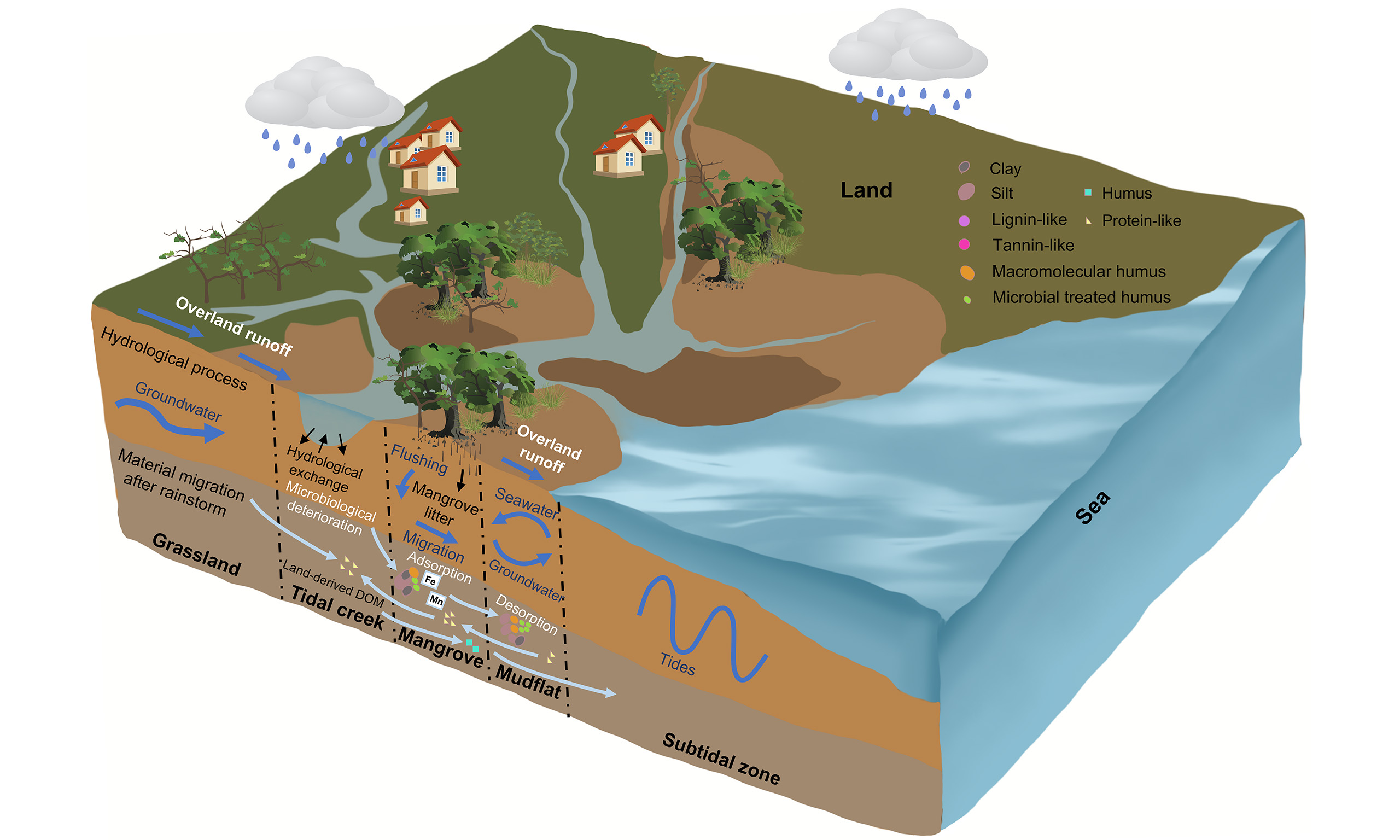

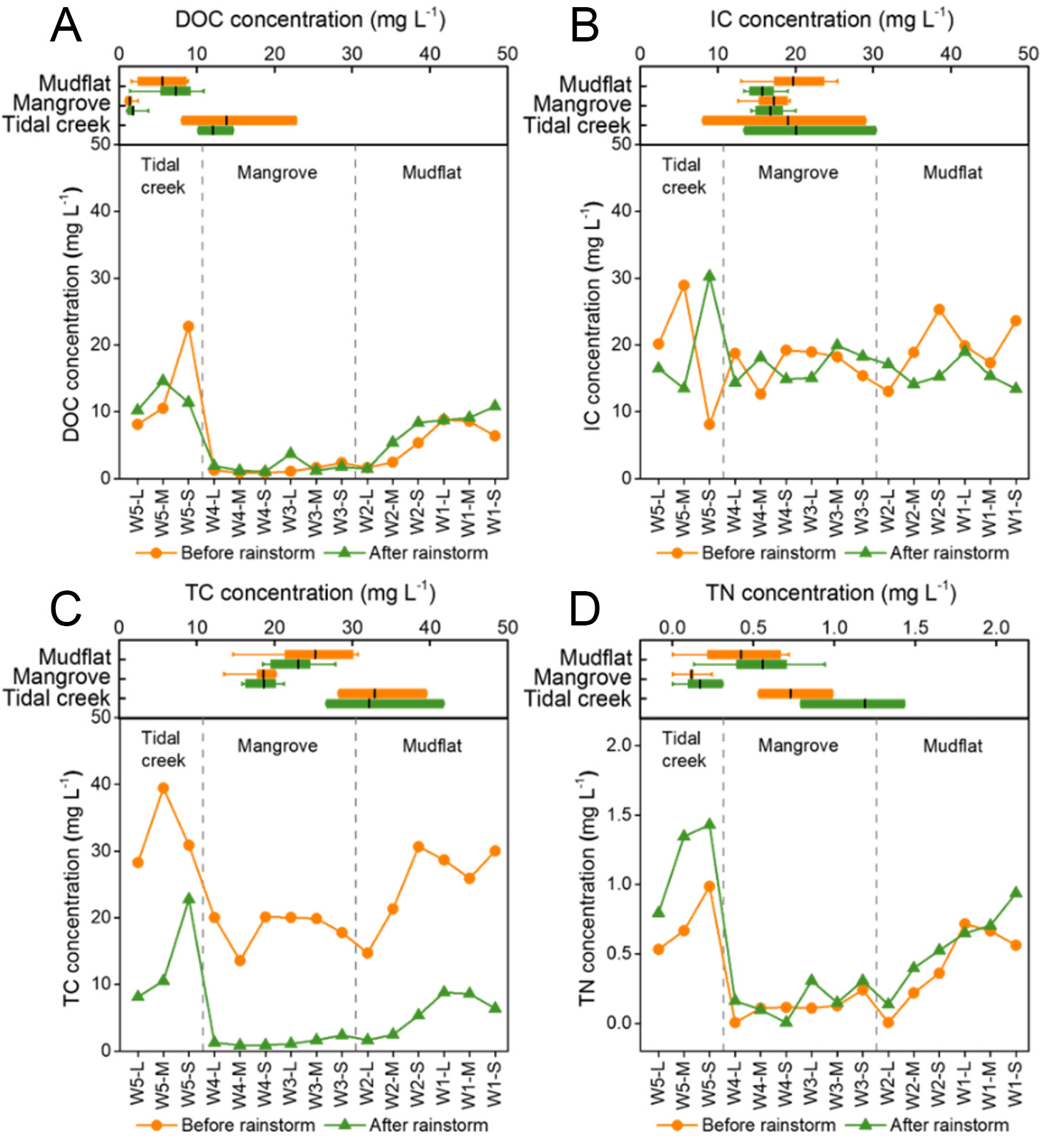

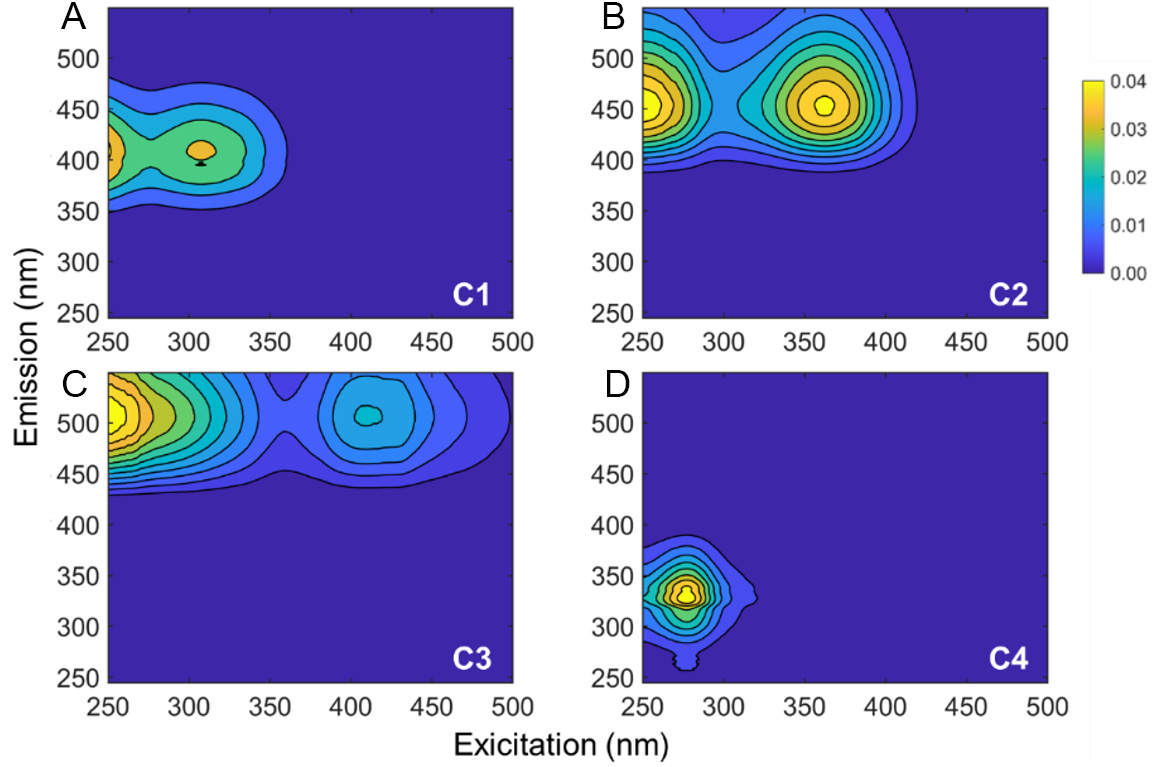
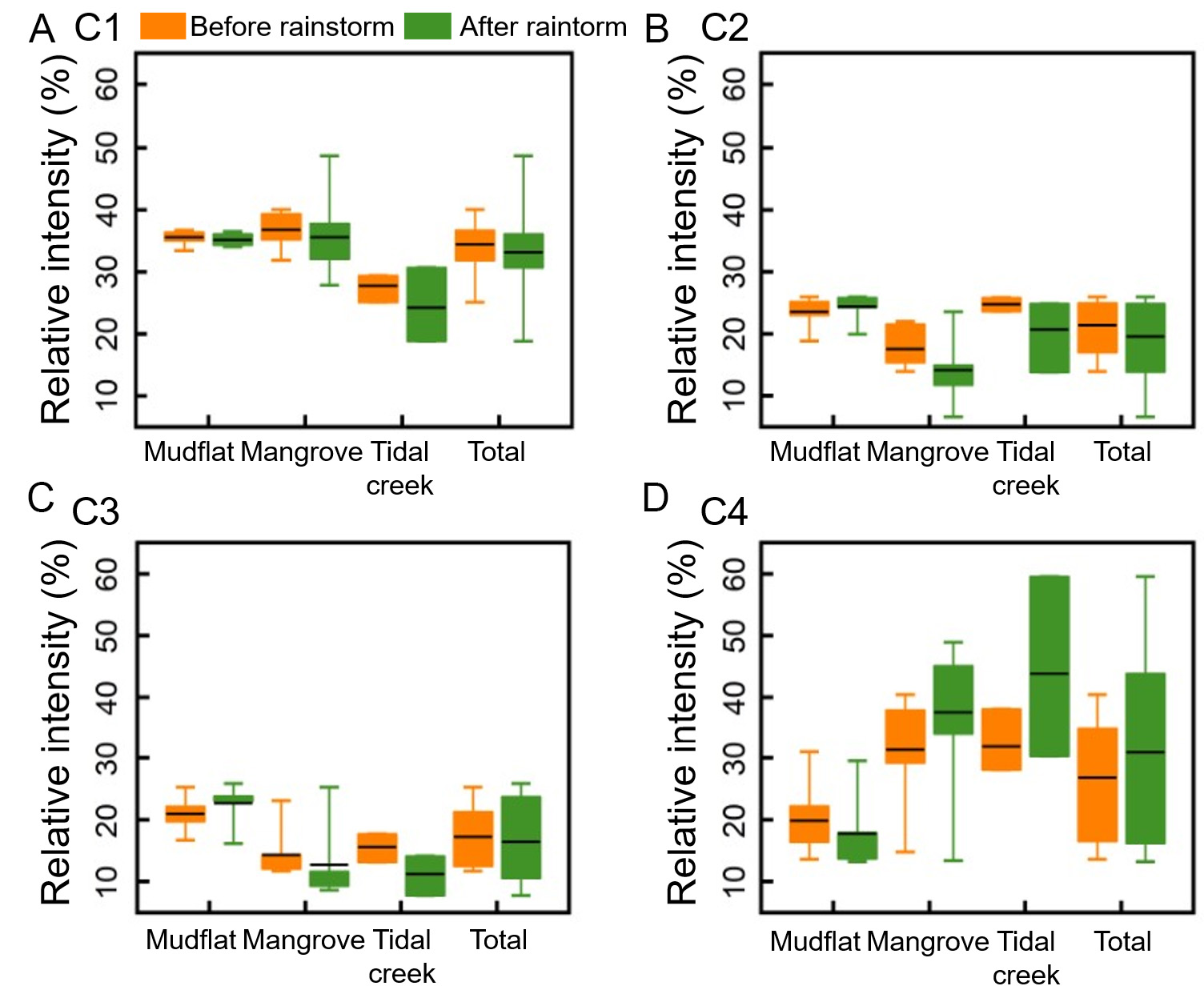
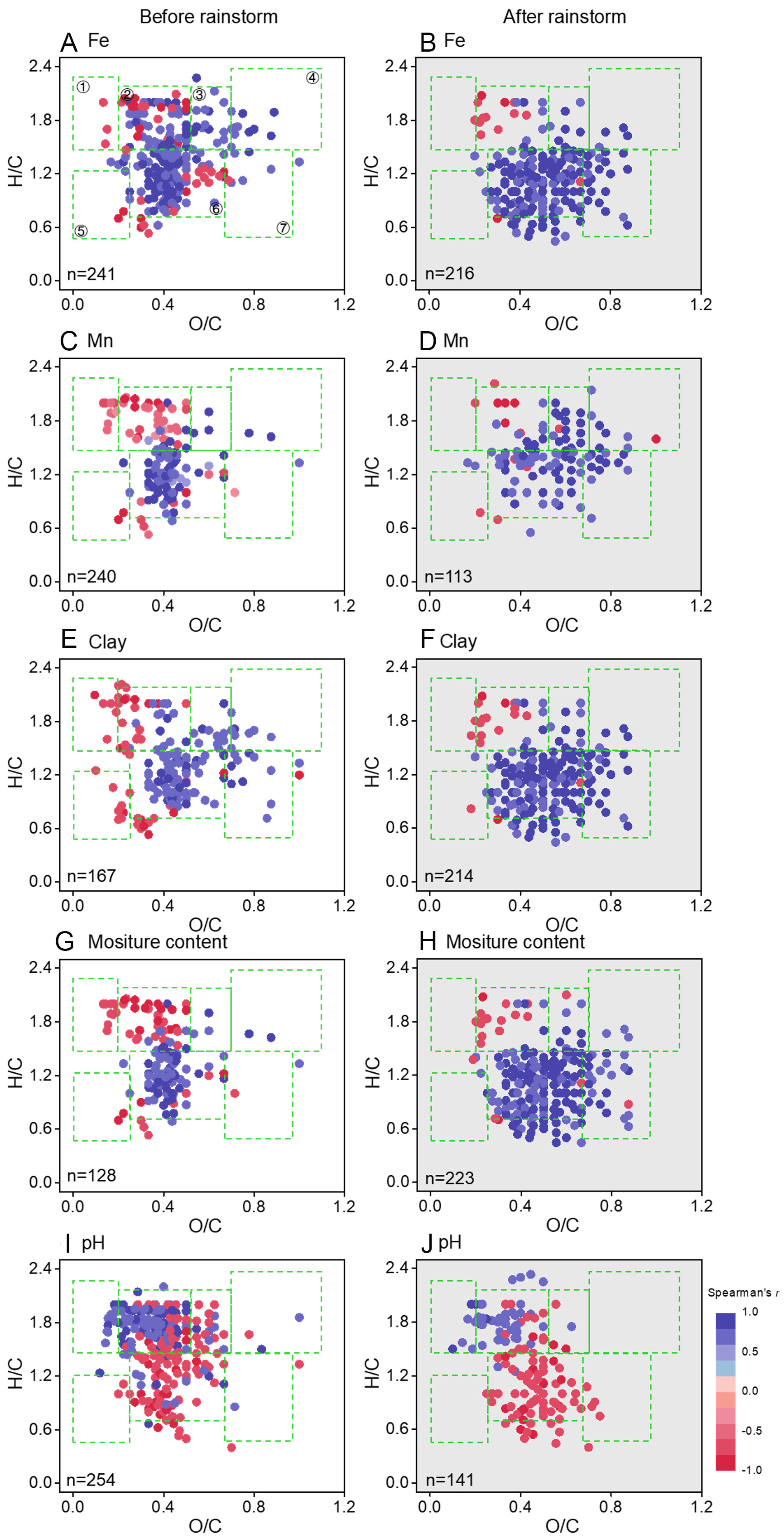










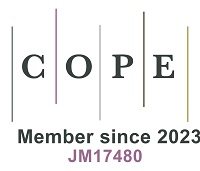




Comments
Comments must be written in English. Spam, offensive content, impersonation, and private information will not be permitted. If any comment is reported and identified as inappropriate content by OAE staff, the comment will be removed without notice. If you have any queries or need any help, please contact us at [email protected].